A plank of length 20m and mass 1kg is kept on a horizontal smooth surface. A cylinder of mass 1lg is kept near one end of the plank. The coefficient of friction between the two surface is 0.5. The plank is suddenly given a velocity 20m/s towards left

Time in which plank and cylinder separate
1sec
1.5sec
2.5sec
2sec
The correct Answer is:B
fR=MR22α,f=5N,M=1kg,
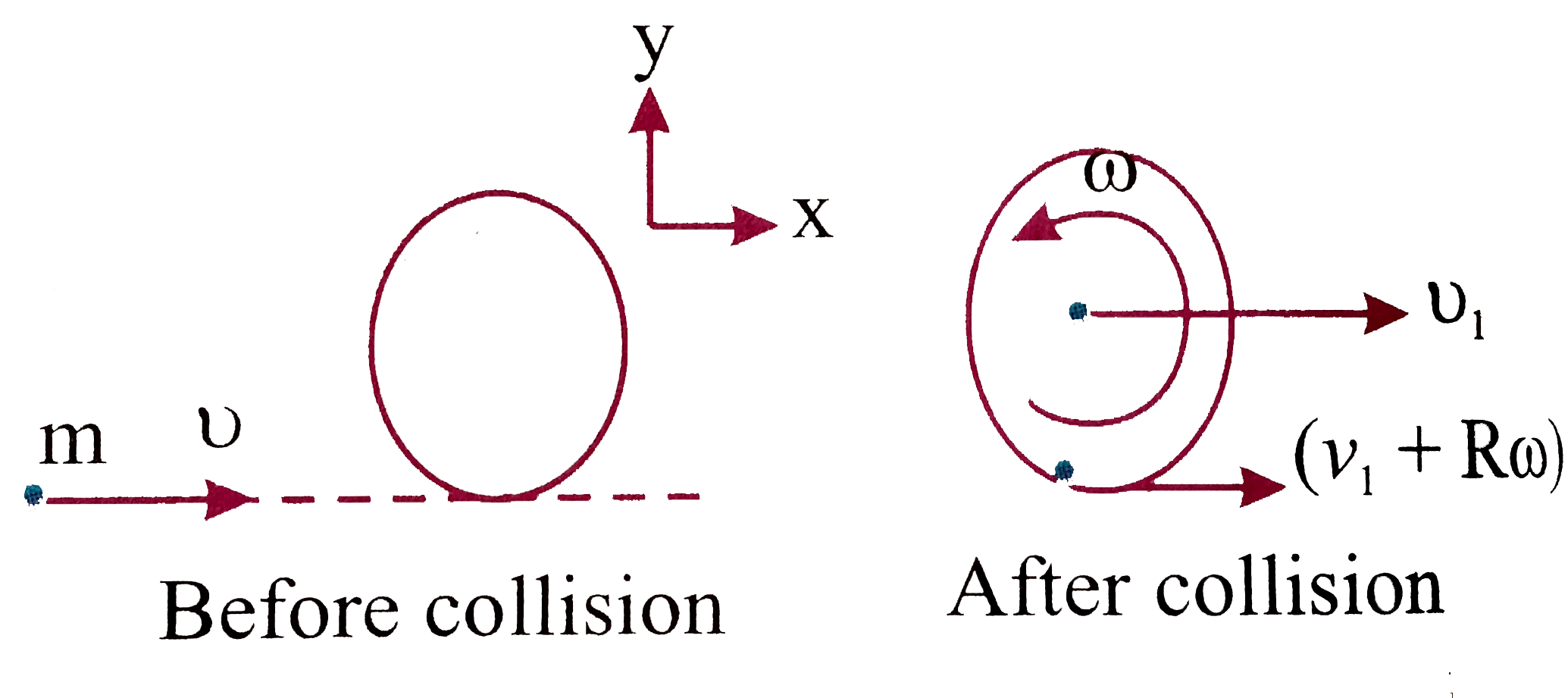
Rα=10m/s2,a1=fM=5m/s2,a2=5m/s2,
For acontact=a1,vcontanct=(a1+Rα)t=15t.....(1)
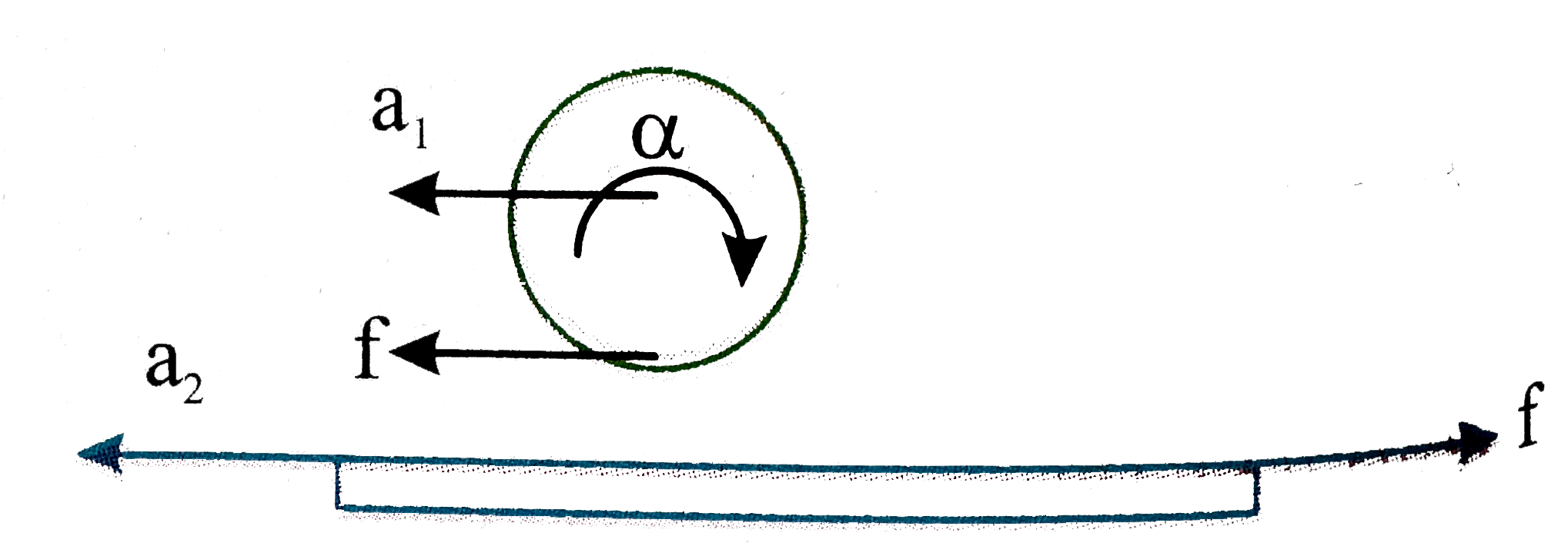
From eqns. (1) and (2)we get
t=1sec
Till the cylinder sllips on plank
Srel=urel+12arelt2,20×1−12×10×12=15m
Velocity of plank when pure rolling begins
v=20−5t=15m/s
Velocity of cylinder a1t=5m/s
When pure rolling begins, friction force vanishes, velocity of plank and cylinder is constants. after pure rolling beings.
Topper's Solved these Questions
- BOOK - NARAYNACHAPTER - SYSTEM OF PARTICLESEXERCISE - Level-VI78videos
SYSTEM OF PARTICLES
- BOOK - NARAYNACHAPTER - SYSTEM OF PARTICLESEXERCISE - Level -II(H.W)47videos
SYSTEM OF PARTICLES
- BOOK - NARAYNACHAPTER - PHYSICAL WORLDEXERCISE - C.U.Q10videos
PHYSICAL WORLD
- BOOK - NARAYNACHAPTER - SYSTEM OF PARTICLES AND ROTATIONAL MOTION EXERCISE - EXERCISE - IV39videos
SYSTEM OF PARTICLES AND ROTATIONAL MOTION
Similar Questions
A solid cylinder is kept on one edge of a plank of same mass and length 25 m placed on a smooth surface as shown in the figure. The coefficient of friction between the cylinder and the plank is 0.5. The plank is given a velocity of 20ms−1 towards right. Find the time (in S) after which plank any cylinder will separate. [g=10ms−2]
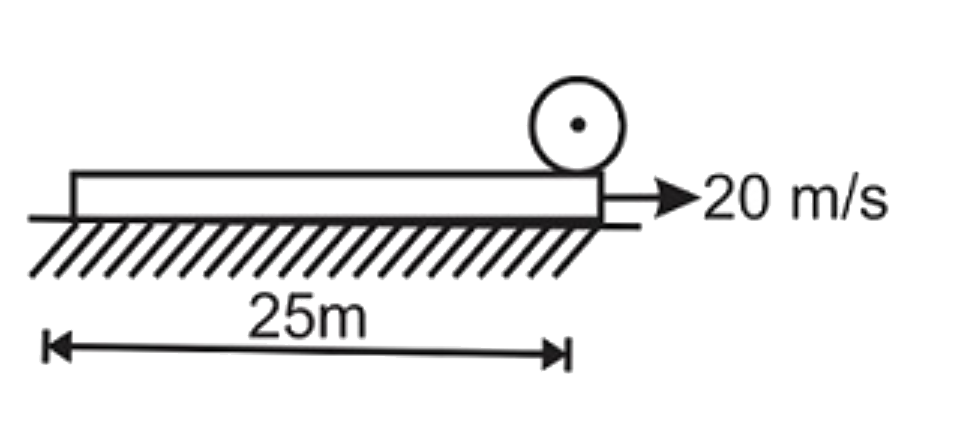 View Solution
View SolutionA plank of mass m rests symmetrically on two wedges B and C of mass M. What is the acceleration of the plank? Neglect friction between all the contact surfaces.
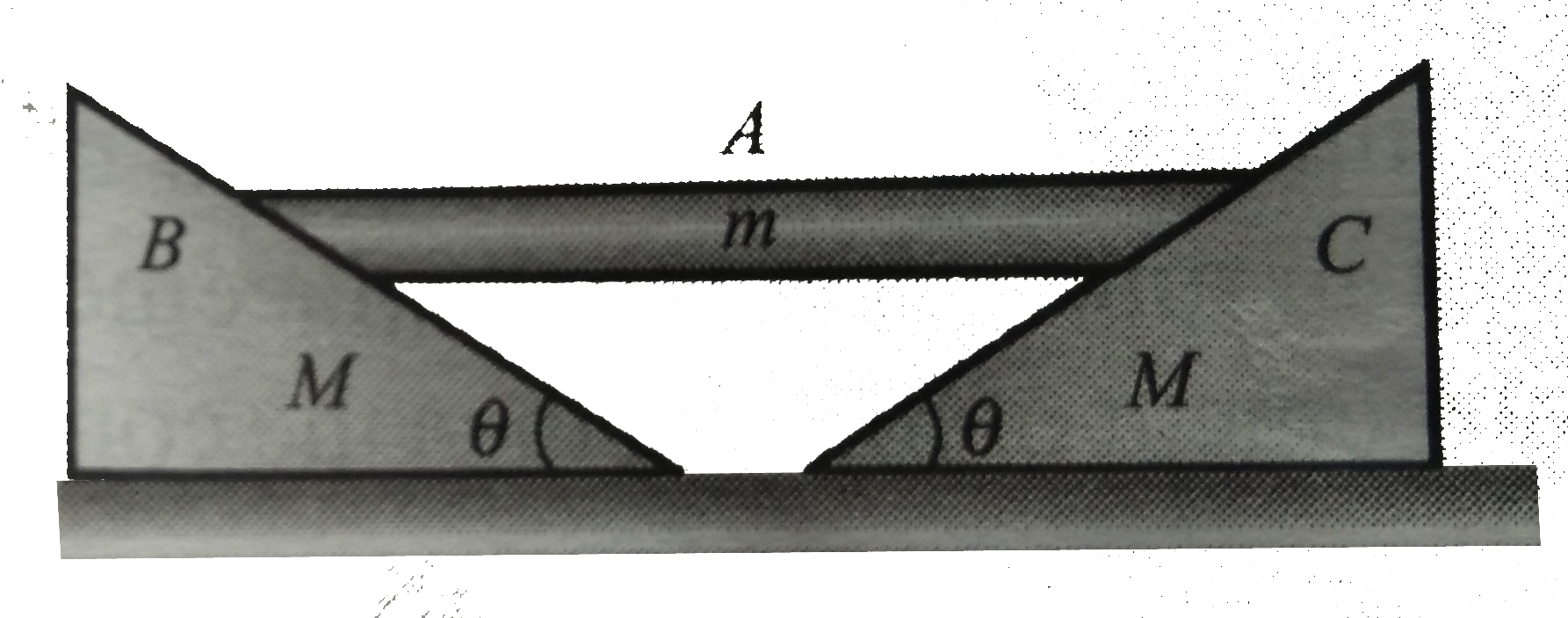 View Solution
View Solution
Knowledge Check
- Question 1 - Select One
A plank of length 20m and mass 1kg is kept on a horizontal smooth surface. A cylinder of mass 1lg is kept near one end of the plank. The coefficient of friction between the two surface is 0.5. The plank is suddenly given a velocity 20m/s towards left
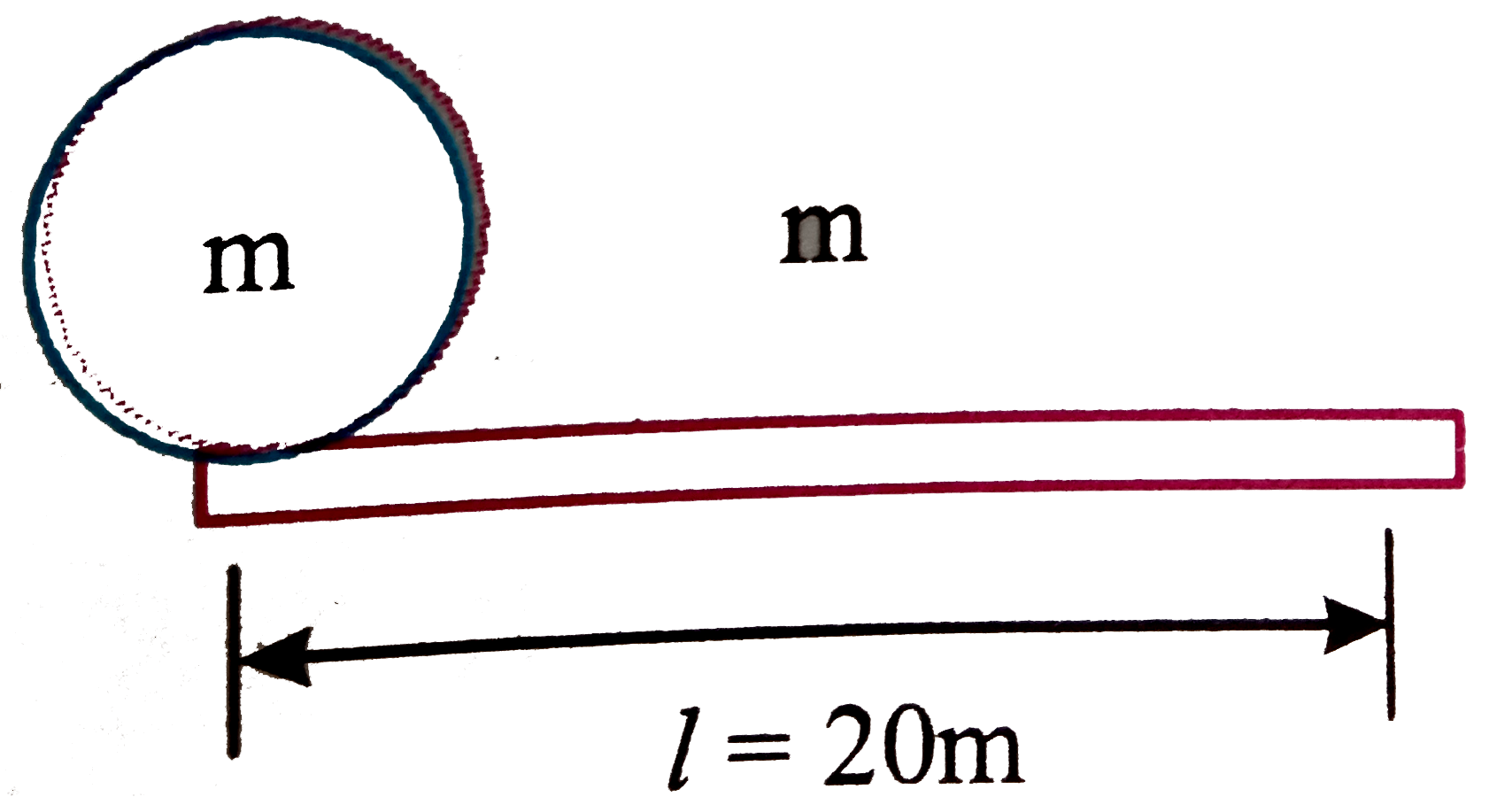
Which of the following statements is correct?A10m/sB1.5secC20m/sD25m/s - Question 2 - Select One
A plank of length 20m and mass 1kg is kept on a horizontal smooth surface. A cylinder of mass 1lg is kept near one end of the plank. The coefficient of friction between the two surface is 0.5. The plank is suddenly given a velocity 20m/s towards left

Which of the following statements is correct?Apure rolling of cylinder takes place immediatelyBinitially cylinder slips and then pure rolling beginsCpure rolling never beginsDthere is no lose in kinetic energy during its entire motion. - Question 3 - Select One
A plank of length 20m and mass 1kg is kept on a horizontal smooth surface. A cylinder of mass 1lg is kept near one end of the plank. The coefficient of friction between the two surface is 0.5. The plank is suddenly given a velocity 20m/s towards left
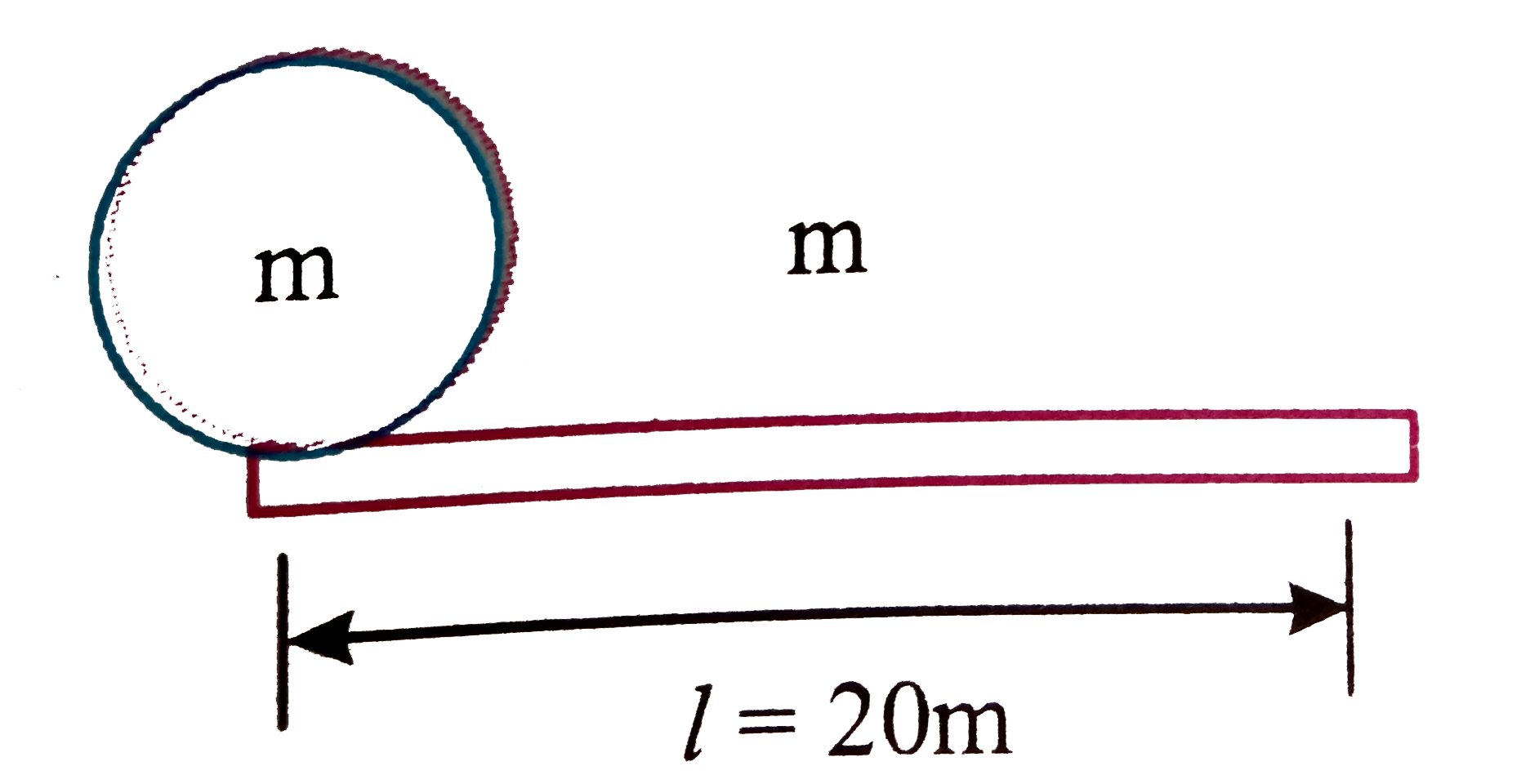
Which of the following statements is correct ?Ainitial acceleration of cylinder is 5m/s2 towards leftBinitial acceleration of cylinder is 5m/s2 towards rightCinitial acceleration of cylinder is 10m/s2 towards rightDinitial acceleration of cylinder is 10m/s2
A thin but very large plank of mass 2 m is placed on a horziontal smooth surface. A solid cylinder of mass m and radius r is given only translational velocity v0 and gently placed on the plank as shown in the figure. The coefficient of kinetic friciton between the plank and the cylinder is μ.
 View Solution
View SolutionA plank of mass 2kg and length 1m is placed on horizontal floor.A small block of mass 1kg is placed on top of the plank , at its right extreme end .The coefficient of friction between plank and floor is 0.5 and that between plank and block is 0.2 . If a horizontal force =30N starts acting on the plank to the right ,the time after which the block will fall off the plank is (g=10ms−2)
View SolutionA block A of mass m is over a plank B of mass 2m. Plank B si placed over a smooth horizontal surface. The coefficient of friction between A and B is 12. Blocks A is given a velocity V0 towards right. Then
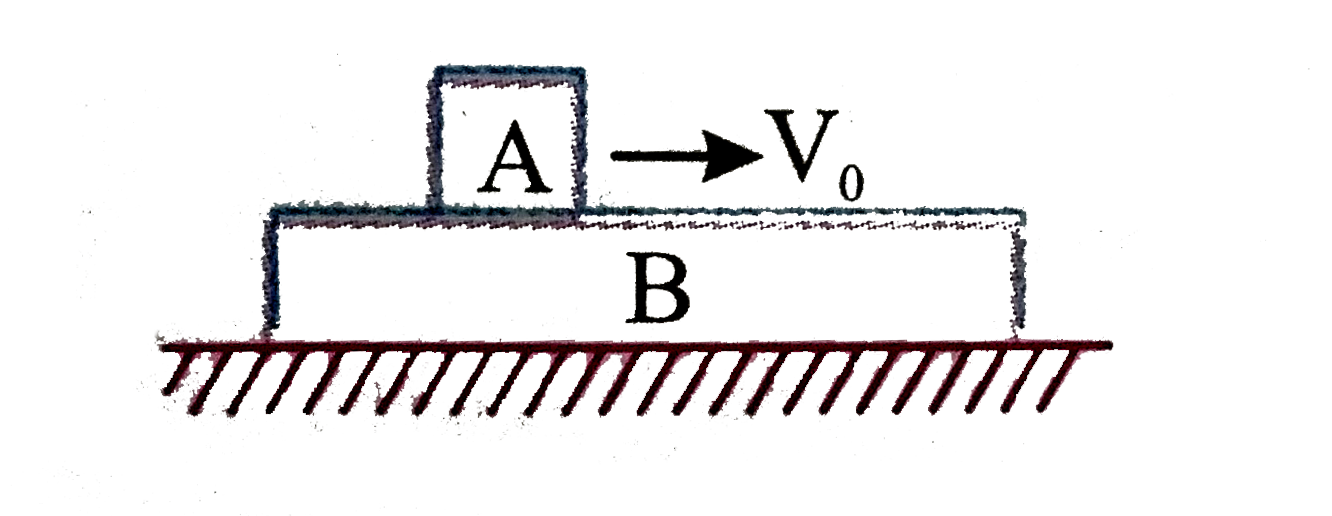 View Solution
View SolutionA plank A of mass M rests on a smooth horizontal surface over which it can move without friction A cabe B of mass m lies on the plank at one edge .The coefficient of friction between the plank and the cube is μ The size of cube is very small in comparison to the plank.
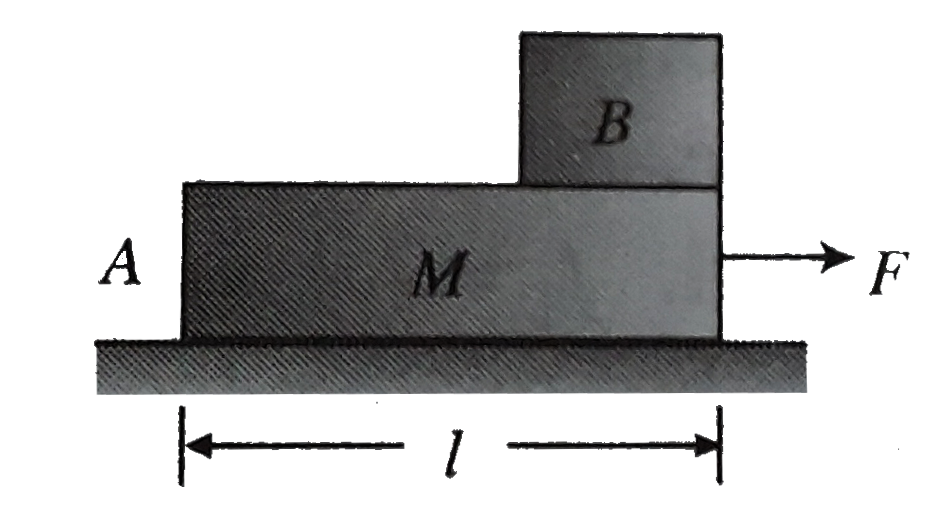
At what force F applied to the plank in the horizontal direction will be cube begin to slide towards the other end of the plank?View SolutionA plank A of mass M rests on a smooth horizontal surface over which it can move without friction A cabe B of mass m lies on the plank at one edge .The coefficient of friction between the plank and the cube is μ The size of cube is very small in comparison to the plank.
In what time will the cube fall from the plank if the length of the latter is l?
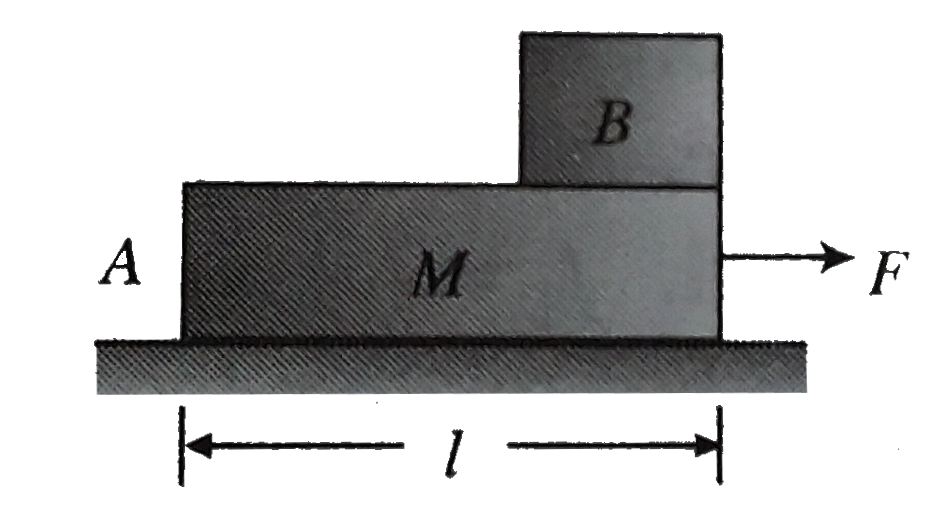 View Solution
View Solution

